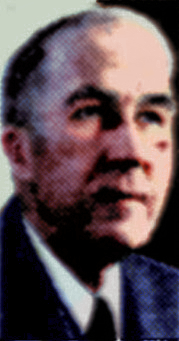Yanks reach Manila in 26-day drive
City first occupied by U.S. in 1898
By the United Press
The Japanese and American campaigns for Manila were of almost exactly the same duration.
On December 9, 1941, two days after Pearl Harbor, the Japs made their initial landing on the city’s home island of Luzon. On December 27, they bombed undefended Manila and on January 2, 1942, their land forces occupied the “open city” and the Cavite Naval Base.
The American Philippines campaign began October 20, 1944, with the landing on Leyte. It moved onto Luzon January 9, 1945, with the landing at Lingayen Gulf and into Manila itself yesterday, February 4.
Jap 24, U.S. 26 days
Thus on Luzon Island, the Jap campaign took 24 days and the American 26.
The first campaign ended with the imprisonment of about 4,000 Americans, Britons and other Allied nationals, many of whom have since been rescued. All U.S. ships and Navy personnel were removed prior to occupation. Jap casualties, while not officially known, were believed comparatively small.
In the American campaign, U.S. casualties from October 20 through January 29 have been 16,806. This is approximately one-tenth of the Jap toll of 164,000 casualties.
Known once as the trade center of the Pacific, Manila is an important prize and one for which America has fought twice – both times with the MacArthur name at the fore.
First occupied in 1898
Manila was first occupied by U.S. forces August 13, 1898, after the Spanish-American War. Spain had ruled the Philippines for 370 years. Although the islands were not officially ceded to the United States until December 10 that year by the Treaty of Paris, the Manila port was reopened to commerce within a week after American occupancy.
Following an insurrection February 4, 1899, President McKinley, on July 4, 1901, appointed William H. Taft as civil governor of the Philippines to succeed the military governorship of Maj. Gen. Arthur MacArthur, father of the present general.
Thereafter began a long-range program of co-benefit aimed at the building up of American trade in the East and the eventual political independence of the Philippines. Until 1936, 65 percent of Manila’s commerce was with America. Manila developed into a modern healthful city with free education and improved living standards.
Landlocked harbor
Manila is the capital and most important city of the Philippines Archipelago with one of the largest landlocked harbors in the world. It is built over an area of 14 square miles around the mouth of the Pasig River on the east and inner shore of Manila Bay, a crescent-shaped bay about 100 miles in diameter.
At the head of the bay stands Corregidor. It was to this fortified island, known to some as the “Gibraltar of the Pacific,” that U.S. forces retreated after their epic 98-day stand on Bataan Peninsula against overwhelming odds. On Corregidor, Lt. Gen. Jonathan Wainwright surrendered May 6, 1942.
The modern half of Manila on the north side of the Pasig is known as the Escolta or “Broadway of Manila.” It contains the wholesale and retail districts as well as the homes of native workmen and leads out into the northeastern suburb of Santa Mesa, the exclusive residential section of Americans and Europeans.
Walled city in south
On the shore line south of the Pasig, now known as the port area, is Pier Seven, one of the largest and most modern in the world. The southern half of the city is known as Intramuros because it contains the ancient walled city built by the Spanish.
The Philippines were discovered by Magellan, the famous Portuguese navigator and soldier.
In the early 16th century, Portuguese trade routes were established to the east around the Cape of Good Hope and Spain, seeking a new one, sent an expedition under Magellan to the Philippines Archipelago, then known as San Lazaro Islands. A later expedition found the trading center of Manila, a crudely fortified town on the south bank of the Pasig. In 1571, a Spanish officer took over the town and laid it out as a city.
The earliest history of the Philippines goes back to the period when it was a dependency of a succession of Hindu-Malayan empires in Indochina, Sumatra and Borneo. From 1325 to 1405, it was under the Javanese empire of Majapahit and later was a dependency of China during the Ming Dynasty.
For over 100 years preceding 1565, the island of Luzon was often held by Jap seafaring adventurers while the island was dominated by Mohammedan Borneo.
